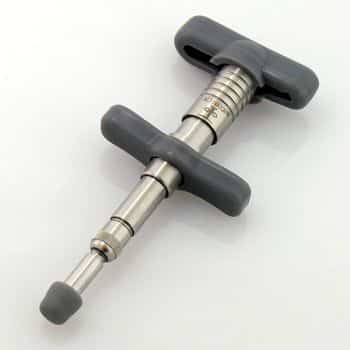
When you visit a chiropractor, they utilize various tools and techniques to help your body heal and function better. Two popular instruments in chiropractic care are the Arthrostim and the Activator.
In this article, we will delve into the key differences between these two tools, explaining them in a simple way so you can better understand how they work. We’ll also share why our clinic prefers using the Arthrostim for patient care.
Before diving into the specifics of the Arthrostim and the Activator, it’s important to understand why chiropractors use tools in the first place. Traditional chiropractic care does not work for all patients. Especially those patients that are more sensitive, like seniors, children, pregnant women, those recovering from an injury, or someone that has health risks that shouldn’t receive a traditional adjustment. For more information about the differences between chiropractic styles, read our blog post about Traditional Chiropractic vs. Instrument only Chiropractic vs. Hybrid Chiropractic. By using specialized tools, chiropractors can make precise adjustments and gentle adjustments to the spine and other joints, helping to relieve pain, improve mobility, and promote overall health.
Even though both the Arthrostim and Activator are addressing the same need for patients, the way that they work is very different. In the section below, we will describe some of the differences.
The Arthrostim is a chiropractic adjusting instrument that uses rapid, repetitive tapping motions to deliver precise adjustments. With the ability to deliver multiple taps per second, it can provide a wide range of treatments for various issues.

One of the significant benefits of the Arthrostim is its ability to deliver adjustments with minimal force. This makes it an excellent option for patients who are sensitive to traditional manual adjustments or those with specific conditions that require a gentler touch.
The Arthrostim’s versatility allows chiropractors to target specific areas of the spine and other joints, making it suitable for addressing various conditions.
The Activator is another popular chiropractic adjusting instrument. Unlike the Arthrostim, the Activator uses a single, controlled impulse to deliver adjustments.
This tool has been in use for several decades and is widely recognized for its effectiveness in treating various spinal and joint issues.

While the Activator also offers precision, its single impulse delivery makes it a more focused instrument when compared to the Arthrostim.
The Activator, on the other hand, delivers a single, controlled impulse for each adjustment. While this method can be effective, it may require more time to address multiple areas or complete a comprehensive treatment.
The Activator’s single impulse adjustment may feel more forceful to some patients leaving them sore afterwards, particularly those who are sensitive to manual adjustments. However, it is still considered a low-force adjusting technique when compared to traditional manual chiropractic adjustments.
The Activator, while precise, may be better suited for more focused treatments and specific conditions, as it delivers a single impulse per adjustment.
Our clinic prefers using the Arthrostim for several reasons:
Both the Arthrostim and the Activator are valuable tools for chiropractors, each with its own set of benefits and applications. However, our clinic prefers using the Arthrostim due to its increased comfort, efficiency, flexibility, customizability, and patient satisfaction. When choosing a chiropractic treatment plan, it’s essential to discuss your specific needs and preferences with your chiropractor. They can help determine which instrument, whether it be the Arthrostim or the Activator, is best suited for your individual situation and provide the most effective care possible.